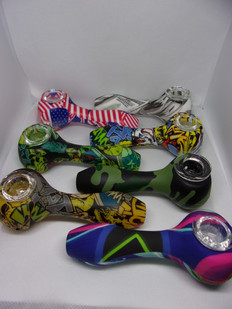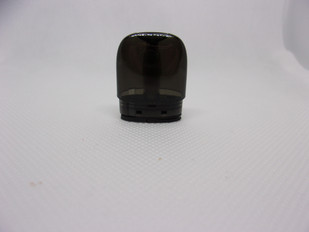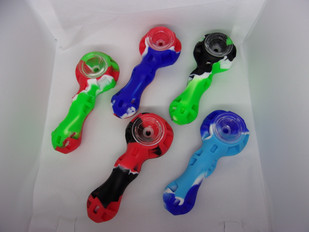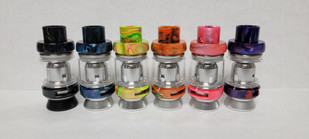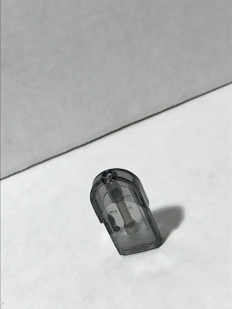- Home
- The Vape Mall Blog
- What is Acne and Could CBD Be the Answer?
What is Acne and Could CBD Be the Answer?
Posted by on

Acne is a chronic skin condition often affecting the face, neck, chest, and back. Acne can also affect the upper arms, shoulders, and other body parts. The skin's sebaceous glands produce an oily substance called sebum. This oil lubricates and protects your skin. When pores get clogged with oil or dead skin cells (which naturally shed from your body), dirt and bacteria may mix with this material inside the pore to form a plug or "microcomedo”. Microcomedos can block the pore's opening, causing a pimple to form. Pimples are made up of skin cells and debris.
Acne occurs around the face, chest, back, buttocks, and neck areas, where it’s visible to everyone who sees them.
What Causes Acne?
The exact reason for acne is still unknown, but several factors probably play a role, including:
- Bacteria called Propionibacterium acnes that live in the skin and hair follicle ducts.
- Hormones produced in the skin, as many acne sufferers have higher testosterone levels than normal.
- Most people with acne have one or both of two genes known to increase sebum production, a protein that helps keep your skin oiled. If you’ve one or both of these genes, you are more likely to get acne as an adult than someone who doesn't have them.
- -First gene is called the androgen receptor
- -Second is a gene that regulates the levels of male hormones in women.
- If a clogged hair follicle is not cleaned regularly, bacteria can grow inside it and cause inflammation.
Acne often begins as harmless blackheads or whiteheads. As the condition progresses, many pimples form, and scarring may happen.
How Does Acne Affect Your Skin?
When the oil gland in your skin produces more oil than your skin needs, it may make more sebum than it needs, causing acne. The extra sebum becomes trapped in pores and may start to block the opening of the hair follicle inside the pore (this condition is called a "pimple"), causing an infected area to become inflamed and filled with pus.
The yellowish pus color is due to a chemical reaction between the white blood cells trying to kill the bacteria found inside your pores and the puss. This bacterial infection can cause acne. To explain why this happens, we need to look at what is inside each pore in your skin:
- Sebaceous glands (oil glands) sit at the base of each hair follicle. These glands produce sebum, an oily substance your body needs to moisturize and protect your skin.
- Dead skin cells (called sebum) collect in the oil gland and make a plug up inside the hair follicle, blocking the opening to the pore. This causes an infection.
- White blood cells help protect your body from infection by killing bacteria, germs, and other germs that may have entered your body. If there are many white blood cells (called neutrophils), you will have an infected area that appears red because the white blood tissue is bright red.
- That red color comes from an enzyme that the white blood cells produce called myeloperoxidase, a powerful disinfectant. Pus is also made up of a chemical reaction between the immune system and bacteria.
Current Treatments for Acne
Oral antibiotics (such as tetracycline or minocycline) eliminate the bacteria that are causing acne. These treatments can be expensive and may not work well. Oral antibiotics do not cure your acne, but they can help keep it under control when you stop taking them. Antibiotics such as doxycycline and erythromycin may be prescribed for acne in children.
Topical medicines can be used alone for mild acne or in combination with oral antibiotics for more severe cases. Depending on the type of acne, these may include Salicylic acid or Benzoyl Peroxide, which help dry up the oil. Azelaic acid is another skin-drying agent that effectively controls mild to moderate inflammatory acne.
Another form of treatment is laser therapy. The light beams break down the clogged pores and kill the bacteria causing acne. This type of treatment is usually very safe and effective but isn't without risk. Blood vessel (capillary) damage can occur during the treatment, and possible side effects include:
- Sun sensitivity
- Swelling
- Infection at the site of the laser treatment
- Scarring (these are usually minor)
There is also the possibility of a second treatment causing permanent damage.
In some instances, a dermatologist may use prescription retinoids to improve the appearance of acne scars. Non-steroidal topical antibiotics can be used to treat acne by fighting off the individual acne bacteria causing those pimples and whiteheads.
Acne can also be treated with topical or oral steroids. These medicines are usually reserved for severe persistent acne cases, but they may help reduce the severity or keep it under control when you stop using them. These medicines must be combined with other treatments prescribed by your doctors, such as topical or oral antibiotics, azelaic acid, and retinoids.
Topical antibiotics (such as clindamycin or erythromycin) are used alone to clear up mild to moderate acne. Oral antibiotics are combined with topical antibiotics to treat moderate and severe cases. These medicines work by unclogging the pores of your skin and killing the bacteria that cause inflammation.
Medicines that contain antibiotics, such as erythromycin, for oral acne, are used to treat a broad range of different types of acne. For example, erythromycin is used to treat blackheads and whiteheads. The antibiotics can be prescribed individually or in combination with other treatments.
Using CBD To Treat Acne
The product "clinical cannabis" (also called hemp oil) is derived from the hemp plant. These oil-like products are often used topically or orally to treat acne, inflammation, other skin disorders, or pain and nausea.
These oils can be made from cannabis plants or hemp plants (these are the same species of cannabis).
Dermatologists and skincare product developers have combined cannabidiol with regular moisturizers and acne treatments to deliver effective yet milder skincare treatment. One particular method currently used to control, maintain and treat acne and other skin diseases is the use of sub-micronized, bioavailable CBD oil or CBD cream.
Although the role of CBD in acne has not yet been clearly defined, studies suggest that its potential benefits for skin health include:
- The potential to reach areas of low circulation and vasodilate blood vessels.
- The ability to reduce inflammation and auto-immune processes.
- The possibility of reducing sebum production.
- The potential to reduce the effects of stress on skin cells.
Many people with acne struggle with ones they don't see. When dead skin cells build up, it causes blemishes that are not due to the over-production of oil glands. Over time, this build-up can become a blemish. When using CBD oil, CBD cream, or CBD oil products and you are experiencing acne that is not associated with excessive oil production, your skin may begin to heal.
Several finings have examined the potential therapeutic benefits of topical cannabidiol for dermatological conditions. Early research has shown that topical CBD can effectively treat acne, psoriasis, atopic dermatitis, post-inflammatory hyperpigmentation, and inflammatory skin diseases such as eczema. The anti-inflammatory properties of cannabidiol may also be beneficial in depressing skin cell proliferation and inhibiting tumor growth.
 Loading... Please wait...
Loading... Please wait...



